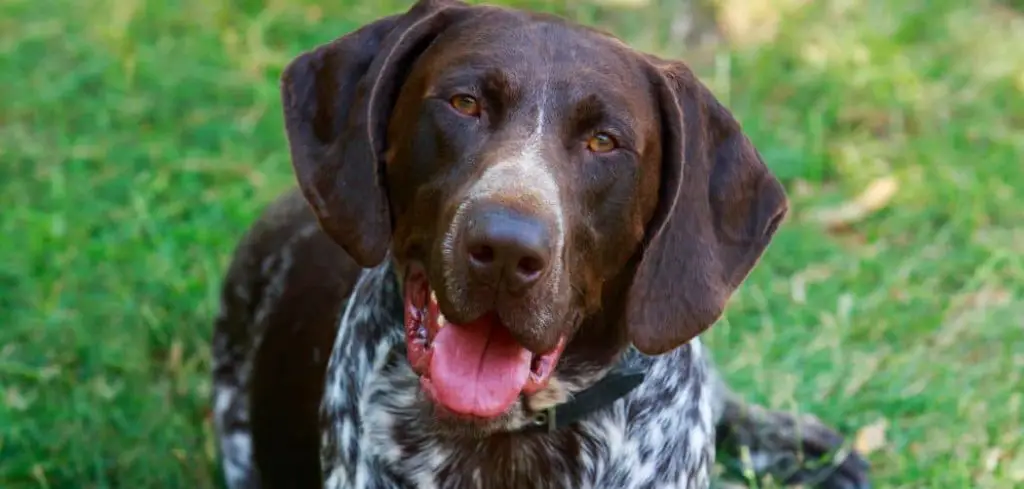Licking is a natural behavior for dogs—but when your dog is licking excessively, it could signal discomfort, stress, or an underlying health problem. Whether it’s their body, the floor, or you, excessive licking shouldn’t be ignored.
We outline the common causes of dog licking excessively, what you can do at home, and when to seek veterinary help.
Table of Contents
Dog Licking Excessively — Why It Happens
Excessive licking in dogs is often a response to allergies, pain, anxiety, nausea, or skin infections. While licking can be self-soothing or a way to clean, persistent or obsessive licking is usually a red flag. Determining what your dog is licking—and when—can offer important clues.

Common Causes of Dog Licking Excessively
Allergies (Environmental or Food)
Itchy skin from allergies is a major reason dogs lick excessively. Paws, legs, belly, and even the air can become targets.
You might also notice redness, scratching, or recurring ear infections. Licking relieves the itch but often causes further skin irritation.
Elimination diets, antihistamines, or allergy testing can help identify triggers.
Skin Infections (Bacterial or Fungal)
Moist, warm areas of the body—like paws, groin, or under the legs—can develop yeast or bacterial infections.
Look for odor, greasy fur, red or blackened skin, or hair loss. Dogs lick these areas to soothe discomfort.
Topical or oral treatments from your vet are often necessary.
Pain or Arthritis
Dogs may lick joints or body parts that hurt—especially in older pets with arthritis or those recovering from injury.
If your dog licks one spot persistently and avoids certain movements, pain could be the cause.
Veterinary exams and anti-inflammatory medications can offer relief.
Anxiety or Compulsive Behavior
Stress, boredom, or separation anxiety can lead to compulsive licking. Dogs may target their own body or surfaces around them.
You may notice this behavior during thunderstorms, after being left alone, or in highly stimulating environments.
Behavioral training, enrichment, and calming supplements may reduce anxiety-driven licking.
Nausea or Gastrointestinal Upset
Dogs experiencing nausea sometimes lick floors, lips, or the air.
Signs of nausea may include drooling, lack of appetite, or vomiting. Licking is a self-soothing behavior.
Treating the underlying GI issue is key to stopping the behavior.
Parasites or Fleas
Fleas, mites, or ticks can cause itching and lead to excessive licking of affected areas.
Check your dog’s coat closely, especially around the base of the tail, armpits, or inner thighs.
Flea prevention and parasite treatments are essential for relief and prevention.
What to Do If Your Dog Is Licking Excessively
Observe when, where, and how your dog licks. Is it always the same spot? Is it triggered by stress or food?
Examine their skin for signs of redness, swelling, wounds, or parasites. Don’t overlook their mouth or paws.
Distract your dog with interactive toys or play when you notice the licking starting.
Maintain a consistent routine to reduce stress-related behaviors. Offer plenty of physical and mental enrichment.
If licking continues or worsens, book a vet appointment to rule out medical causes.
When to Call or Visit Your Vet
You should consult your vet if your dog:
Licks the same spot obsessively or has created raw skin
Has hair loss, redness, odor, or discharge
Shows signs of pain, limping, or reduced activity
Seems anxious or stressed during the licking episodes
Vomits or has appetite changes in combination with licking
Your vet may perform allergy testing, skin scrapings, or bloodwork to diagnose the issue.
Related
Read more: Dog Licking Lips Excessively (What it might be telling you)
Read more: Dog Licking Paws Excessively (What it means)
Key Takeaway
Dogs lick for many reasons, but excessive licking can be a sign of discomfort, anxiety, or illness.
Pay attention to the pattern, location, and frequency of the behavior. Whether it’s physical or emotional, early action helps address the cause and brings your dog much-needed relief.
